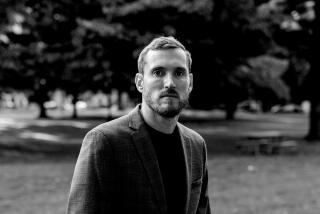John Keegan dies at 78; military historian wrote ‘Face of Battle’
- Share via
John Keegan, a British military historian whose critically acclaimed books spanned ancient and modern warfare and included the bestselling “The Face of Battle,” has died. He was 78.
Keegan died Thursday at his home in Kilmington, England, according to the London Daily Telegraph, where he had been military affairs editor. No cause of death was reported.
A former senior lecturer at the Royal Military Academy at Sandhurst, Keegan left teaching after a quarter of a century to join the Telegraph in 1986.
His fame as a historian was quickly established in 1976 with “The Face of Battle.”
The book, which examined the experiences of common soldiers, focused on the Battle of Agincourt in 1415, Waterloo in 1815 and the Somme in 1916.
In writing “The Face of Battle,” Keegan tapped eyewitness accounts, letters, memoirs and official reports to create what Times book critic Robert Kirsch called a “brilliant work of military history and psychology.”
Among Keegan’s other books are “Six Armies in Normandy” (1982), “The Mask of Command” (1987), “The Second World War” (1989), “A History of Warfare” (1993), “The Battle for History” (1995), “The First World War” (1998), “The Iraq War” (2004) and “The American Civil War” (2009).
Keegan, who once said that the highest calling for a historian is to write for the educated general reader, has been praised for being a master of war and military tactics and for writing with insight and feeling about those who have fought in wars.
In “The Price of Admiralty,” his 1989 book that examines the evolution of naval warfare, Keegan describes his visit to the gun decks of Lord Nelson’s galleon Victory on display in Portsmouth.
“It was actually here,” he wrote, “that the French shot crashed through the scantlings to decapitate men or cut them in two, here that splinters, as deadly as shrapnel, flew to shred and skewer human flesh ... here that the deafened and battle-drugged survivors stopped from the work of killing to reckon their luck and count their friends among the living.”
As Newsweek pointed out at the time the book was published, “In its stark evocation of the turbulent emotions of battle, this is vintage Keegan. Yet a more unlikely chronicler of combat would be hard to imagine.”
Indeed, Keegan was a dapper, soft-spoken and thoughtful man who in person was, as Newsweek put it, “the soul of British civility.”
A bout with orthopedic tuberculosis as a teenager left him with a limp and unfit for military service. In his introduction to “The Face of Battle,” he wrote: “I have never been in battle, nor near one, nor heard one from afar, nor seen the aftermath.”
But that changed when he went on a temporary assignment for the Telegraph to Beirut in 1984.
“It taught me how physically disgusting battlefields are,” he told Newsweek. “It also taught me what it feels like to be frightened.”
Keegan mostly considered himself a pacifist, he told the Chicago Tribune in 1999.
“Ultimately, I would hope one would run the world without having to resort to war,” he said. “The benefits of war are vastly outweighed by the costs.”
And yet, as with World War II, he said, “Sometimes you have to fight wars, but you’d better have a jolly good reason for it, and you have to know there are going to be bad results as well as good results.”
Keegan’s interest in the military began as a boy in England during World War II, when he devoured newspaper accounts of battles.
“I was a child of the war and I was fascinated by it,” he told the New York Times in 1999.
The son of a schools inspector who had served in World War I, Keegan was born in London on May 15, 1934.
At the start of the Battle of Britain in 1940, his family fled London to the safety of Taunton, Somerset, where his father was in charge of a few hundred evacuated children and where young Keegan later saw U.S. troops gathering for D-day.
Keegan, who contracted tuberculosis at 13 and spent about four years in hospital beds, attended Wimbledon College before studying military history at Oxford University.
He toured U.S. Civil War battlefields on grant after graduating and spent two years as a political analyst at the American Embassy in London before he began teaching at the Royal Military Academy at Sandhurst in 1960.
On taking the job at the Telegraph in 1986, he told the New York Times a year later, “I thought to myself, if I don’t do it now, I’ll be an academic all of my life. So I left Sandhurst and I’ve been enjoying myself ever since as a journalist.”
Keegan, who was knighted in 2000, is survived by his wife, Susanne Ingeborg; his daughters, Lucy and Rose; and his sons, Thomas and Matthew.
More to Read
Sign up for Essential California
The most important California stories and recommendations in your inbox every morning.
You may occasionally receive promotional content from the Los Angeles Times.












